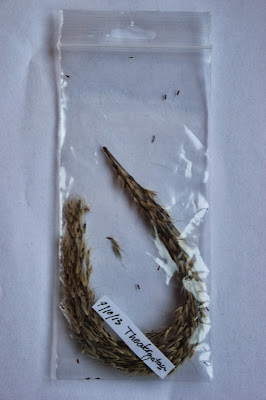About week43:
After the initial confusion in my head, and the next attempt to order this chaos, I have decided to return to one of my starting points. I tried to find out what my interests are, on which subject I feel very strongely, for working on it deeper. In addition I decided to take a direction, whose processing I enjoyed. The collection "23" which I built here in Gothenburg, has become very valuably for me, because I am very proud of some finds; and on the other hand, the collection corresponds to my picture, the form of the nature of Gothenburg. The attempt to pack this into plastic bags , and therefore to pack into my mind-bubbles.
At the beginning of the week 43 I have started to build an archive for my findings. A "thing" in which I can present my findings, at the same time, however shows which relation I have to this collection, and what they mean for the outside world.
The result was a sort of letter case or seed box (in german "Setzkasten"), made of brown cardboard, with 23 fields/boxes, in the dimensions of the plastic bags. The form remind me of my childhood, because my father built a letter case of wood for me, in which I kept a mingle-mangle of small, for myself valuable, objects. At the same time I associate to this archive the pushs/boards of the big cupboards in a miracle chamber, or it remind me of the butterfly's boxes in a natural-historical museum.
The next step will be that I will make for every field one little pillow with a velvet cover, to give to my findings the necessary esteem.
The fact to build/create now something for real, made me very contented. I think that I have found by this archive made of cardboard, a medium which expresses quite well, what I connect with the content in my work.
I discovered the material "cardboard" as a new material for myself . The work with it is very excitingly, it gives big pleasure to me. After some research I found out that many artists and designers deal with the materials paper and cardboard, and bring it in a new context, outside from writing material and packaging material.
Parallel with the construction of the archive I work with Gothenburg city maps.
The city maps, which I got when I came here, first and most important thing in a new city. An aim are spherical objects, folded from the paper-maps. At the moment I experiment with different folding methods.
The group meeting on Thursday was very motivating. I could see that everybody tries to work hard for finishing in a good way for the exhibition. It is good that each of us, has enough time to discuss with the group about the own project, and to get and to give assistances and other recommendations.
 |
| © Viktoria Gitzl |





































